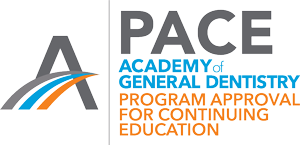 BUYING FOR OTHERS?
Click here to buy for others.
BUYING FOR OTHERS?
Click here to buy for others.Aerosol Management and Indoor Air Safety
Indoor air safety is a critical factor in dental safety programs. Increase your understanding of how to reduce the risk of airborne diseases. The course brings the material to life and provides practical application with workplace scenarios, an action plan, and lists and charts with tips.
Course Overview
This course demonstrates strategies for reducing risk of airborne diseases in dental settings via engineering controls.
As we continue to learn from the COVID-19 pandemic, indoor air safety emerges as a critical factor in dental safety programs. This course focuses on engineering controls that promote indoor air safety and aerosol management, with an emphasis on understanding structural air handling equipment and how to assess, reduce and monitor risk for airborne diseases in the dental environment.
Featured in the course are two workplace scenarios as well as a four-step action plan for managing indoor air quality to reduce airborne disease risk in dental settings. Lists and charts include tips for choosing and using different add-on technologies to improve ventilation and air filtration, and how to monitor and maintain air safety equipment.
This continuing education activity has been planned and implemented in accordance with the standards of the ADA Continuing Education Recognition Program (ADA CERP) through joint efforts between the DALE Foundation and the Association for Dental Safety (ADS).
Course Credentials
Course Compatibility
Desktop, laptop, tablet, and smartphone
AGD Code
148
At the end of this course, you will be able to:
- Describe how to assess risk for airborne diseases in dental environments.
- Identify factors that reduce the risk of airborne diseases in dental environments.
- Understand the importance of managing indoor air quality using air ventilation and filtration equipment to reduce exposure to airborne transmissible diseases (ATDs).
- Compare options for managing indoor air quality (IAQ) using separate air ventilation and filtration equipment.
- Plan ongoing monitoring and maintenance of indoor air handling systems.
Subject Matter Experts
The material featured in this course was developed in support of the ADS-DANB-DALE Foundation Collaboration or originally published in Infection Control In Practice Team Huddle™, a resource for clinicians from the Association for Dental Safety (ADS, formerly known as OSAP) to help build a framework for the Safest Dental Visit™. ADS has no relevant financial relationships to disclose.

The DALE Foundation is an ADA CERP Recognized Provider. ADA CERP is a service of the American Dental Association to assist dental professionals in identifying quality providers of continuing dental education, ADA CERP does not approve or endorse individual courses or instructors, nor does it imply acceptance of credit hours by boards of dentistry. Concerns or complaints about a CE provider may be directed to the provider or to ADA CERP at ada.org/cerp.

